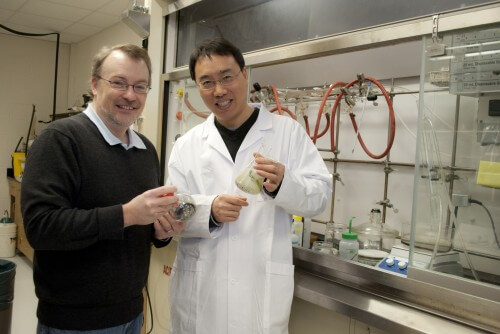"The idea has been floating around in the scientific community for decades and has been uncertain in a variety of contexts, but no one has proposed a chemical system that can prove whether the idea in question is valid or not," said the lead researcher

The same principle that causes ice skaters to turn faster as they bring their arms closer to the body is now being used by researchers at the University of Michigan to understand how molecules transfer energy to their surroundings following the absorption of light.
The conservation of angular momentum is a fundamental characteristic of nature, and it is used by astronomers to locate the positions of moons revolving around distant stars. In 1972, researchers proposed that this principle should also apply to chemical reactions, but a clear demonstration of this was never achieved. In the current issue of the prestigious journal Science, chemist Jim McCusker proves for the first time ever that the phenomenon does exist and also suggests how chemists can take advantage of it in order to control the pathways of chemical reactions in general and predict them.
"The idea has been floating around the scientific community for decades and has been uncertain in a variety of contexts, but no one has proposed a chemical system that can prove whether the idea in question is valid or not," said the lead researcher. "Our findings not only validate the idea, but they also allow us to start thinking about chemical reactions from a completely different perspective."
The experiment included the preparation of two similar compounds specially prepared to undergo a chemical reaction known as fluorescence resonance energy transfer (FRET= fluorescence resonance energy transfer). Following the absorption of radiation or light, the system tends to transfer the excess energy from one part of the molecule to another part of it. The researchers changed the identity of one of the atoms in the molecule from chromium to cobalt. This substitution changed the properties of the molecule and "disabled" the reaction. The absence of a measurable energy transition in the compound that contained cobalt instead of chromium confirmed the hypothesis.
"We successfully conducted what is known as a proof-of-principle experiment," explains the lead researcher. "Using these ideas for other chemical processes can easily be imagined, and we are indeed currently examining some of these possibilities." The researchers believe that their findings could affect a variety of fields, from molecular electronics, biology and energy science to the development of new types of chemical reactions.

8 תגובות
This is what I thought about two decades ago, a proportional mini laser system for a chemical reaction in a closed system that will replace gas driven systems with energy consuming compressors, for cooling and air conditioning. Small and large in output, domestic and industrial, and will also replace the heater with small and large absorption systems
Think Again!
http://he.wikipedia.org/wiki/%D7%A4%D7%A8%D7%97%D7%94
: )
Yael,
It is not clear to me why you blame the student by mistake.
FRET is the result of a virtual photon transition between two
Parts of a long molecule, where the basis of the process is interaction
Dipole-dipole. It does not appear therefore that Fret is a chemical reaction....
You are wrong "student": FRET means a chemical reaction!
Maybe FREH is not a chemical reaction… and its sister FREHA
Definitely not a chemical reaction!
: )
^^^
How do molecules have angular momentum? Do you fall asleep during Quantum's lectures?
Regarding the article, in the sentence:
"...to undergo a chemical reaction known as fluorescence resonance energy transfer (FRET)."
I'm afraid there is a mistake - FRET is not a chemical reaction.
As if the article started in the middle without an introduction and explanation, I'm a chemist and I didn't understand what the hell it was about.
1. Is it only about solutions?
2. It is not clear whether we are talking about molecules or individual atoms, how do molecules have angular momentum?
I would very much appreciate another article with more detail.
For the most part, the articles published on this site interest me.
This time I have to say that I really (but really) did not understand the article.
Can you please simplify the text with the addition of illustrations to understand what it is about
Thanks
great!
Now it only remains to study a little physics and chemistry to understand what it is about.